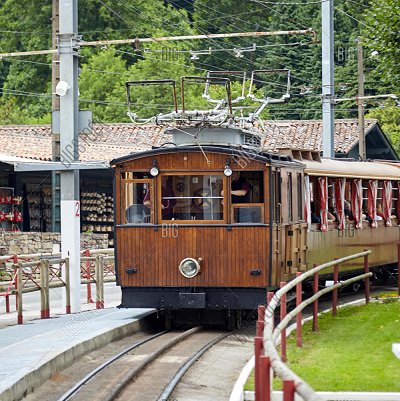
Like us on Facebook
PLACE NAMES


 
|
|
Sare
|

|
|
Sare is a village in the traditional Basque province of Labourd, now a commune in the Pyrénées-Atlantiques department in south-western France on the border with Spain.
The commune is backed by the Pyrenees mountain range, which forms a basin around the village open to the east and the north. Its geological history explains the formation of caves that were occupied by the Aurignacian. The Bronze Age left a number of funerary monuments on the slopes and mountain plateaus of the region.
It is located some 15 km (9.3 mi) to the east of Saint-Jean-de-Luz and the Bay of Biscay, in the western foothills of the Pyrenees.
The summit of La Rhune, a mountain iconic of the Basque country, is situated approximately 4 km (2.5 mi) to the west of the village. The summit can be reached by the Petit train de la Rhune, which commences from the Col de Saint-Ignace, 3.5 km (2.2 mi) to the west of the village on the D4 road to Saint-Jean-de-Luz.
Agricultural activity remains a constant element of the town's economy, even though the location has hosted mining industries since the Middle Ages, and more recently a wool treatment mill. The proximity of the border with Spain, and the configuration of the terrain and the roadways, as well as the shared Basque languages, have given birth to a local economy shared between Spain and France, characterised by smuggling.
Following are the famous places to see in Sare, Basque:
- Le Train de la Rhune
- Les Grottes de Sare
- Le Musee du Gateau Basque
- Parc Animalier Etxola
- Ortillopitz
- Eglise Saint-Martin de Sare
- Office de Tourisme de Sare
- Basq'quad
- Bask Peche Nature
- Suhalmendi, Decouverte du Porc Basque
The Petit train de la Rhune or (in Basque) Larrungo tren ttipia is a metre gauge rack railway in France at the western end of the Pyrenees, in the Basque Country. It links the Col de Saint-Ignace, some 10 km (6.2 mi) to the east of Saint-Jean-de-Luz, to the summit of the La Rhune mountain (Larrun). Although this summit lies on the border between France and Spain, the railway lies entirely within the French département of Pyrénées-Atlantiques.
Trains consist of a four-wheeled electric locomotive that pushes two coaches up the mountain, and leads them down. Each coach is carried by a four-wheeled bogie at its upper end, and a single two-wheeled axle at its lower end. With six ten-seat compartments in each coach, each train carries 120 passengers.
The line operates from mid-March until early-November, with trains every 35 minutes.
The line is one of four lines in the world still using three-phase electric power.
 Feel free to Email me any additions or corrections Feel free to Email me any additions or corrections
LINKS AVAILABLE TO YOUR SITE
| | |





